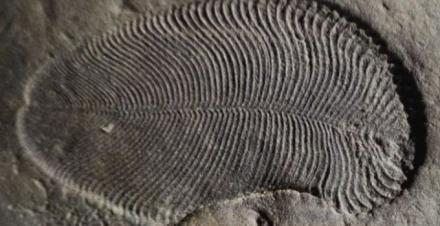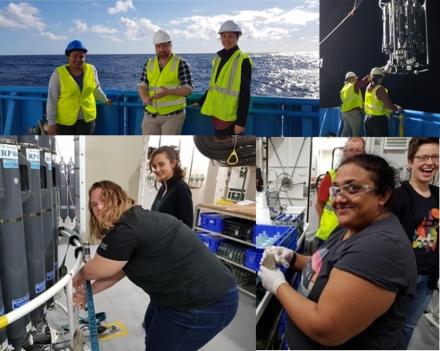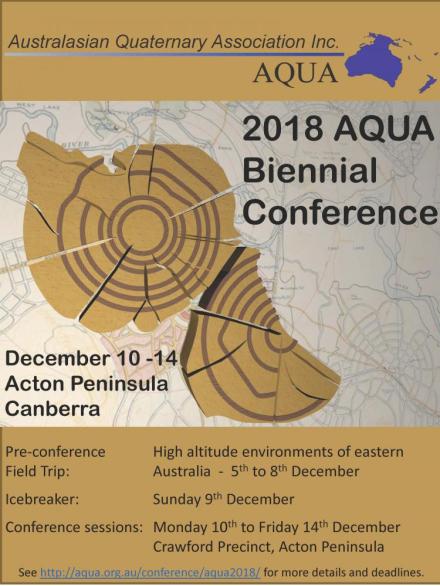|
Director's Message
Cooleagues (phone typo!),
Greetings from Sulawesi, where the College of Science and School are pursuing our Future Research Talent ambitions, a program recently set up with leading institutions in India, whereby top Masters level students are supported to visit the ANU for up to 3 months.
I am visiting UNHAS in Makassar, the leading University in eastern Indonesia, and tomorrow I head to Jakarta to meet with ITB and LIPI representatives. The School is specifically seeking to develop 1+1 articulated masters programs funded by DFAT and Indonesian Ministries, particulary in the areas of geohazards and meeting Indonesia's resource challenges.
Before getting on with the day and week, I'd like to congratulate Ilya and Jochen for their stunning work published in Science last week.
Best regards,
Steve |

|
|
|

|
|
RSES at Sea
Pamala Barrette, Robin Grun, Riteshma Devi, Sarah Andrew, Prayna Maharaj and Michael Ellwood, all from RSES, are currently at sea on the Research Vessel Investigator.
The team is collecting samples from the surface ocean to the deep ocean off the coast of Tasmanian. The team is trying to understand the biogeochemical connections between springtime phytoplankton growth, iron, light and nutrients.
Photos of the team at work:
Top L: Prayna Maharaj, Robin Grun and Pamala Barrette enjoying the calm weather.
Top R: Robin Grun and Pamala Barrette retrieving the trace metal rosette.
Bottom L: Sarah Andrew sampling the CTD rosette.
Bottom R: Riteshma Devi preserving a dissolved oxygen sample. |
|

|
|
|
|
“Asteroids and crustal evolution – synopsis of a new book”
Thanks to their long-term geological stability, Precambrian and younger terrains in the Australian continent contain a large number of impact structures and probable impact structures. These include 38 confirmed asteroid impact structures and 43 ring structures, many of which constitute possible to probable asteroid impact structures. These structures have been the subject of more than half a century of studies by geologists from universities, geological surveys, and related institutions. The structures range from several tens of meter-large craters, such as the Henbury and Veevers craters, to buried structures larger than 100 km in diameter, such as the Woodleigh impact structure and the Warburton probable impact structure. Discoveries and research of many of these structures, notably by Peter Haines, Eugene and Caroline Shoemaker, John Gorter, Robert Iasky, Victor Gostin, George Williams, and others, published in the literature, are reviewed in the book “Asteroid Impacts, Crustal Evolution, and Mineral Systems with Reference to Australia.”
The book presents a compilation and a review of Australian impact structures, impact ejecta/fallout deposits, and related mineralization, including discussion of the significance of many of these structures for crustal evolution and for mineralization. The book further reviews asteroid impact ejecta/fallout units, mainly of Archaean age studied in the Pilbara Craton of Western Australia and also the late Proterozoic Bunyeroo impact layer in South Australia. Discoveries of impact fallout units in the Pilbara Craton by the US scientists, including Bruce Simonson, Scott Hassler, Don Lowe, and Gary Byerly, and their students and follow-up discoveries and research by Australian geologists have defined the Pilbara as one of the two best documented terrains where Archaean impact ejecta/fallout deposits are identified, the other terrain being the Kaapvaal Craton in southern Africa. A synthesis of evidence from both cratons indicates periods of large asteroid bombardments during ~3.47–2.48 billion years ago, including peak bombardment about 3.25–3.22 billion years ago.
Andrew Glikson |

|
|
The 20th Australian Organic Geochemistry Conference (AOGC) - Origins of oil, old organics and organisms
RSES in collaboration with Geoscience Australia, will host this year’s Australian Organic Geochemistry Conference (AOGC), to be held at the Finkel Theatre, John Curtin School of Medical Research, ANU from 3–7 December 2018.
Details about AOGC 2018, including information about how to register and submit abstracts, are now available on the conference website:
http://www.ga.gov.au/news-events/conferences/australian-organic-geochemistry-conference
Abstract Submission
Abstract submission is now open. An abstract template and instructions can be found on the web page, and the deadline for submission is September 30, 2018.
We welcome abstracts with any topic and application in the field of organic geochemistry and its fringes, including carbon sequestration, palaeobiogeochemistry, geomicrobiology, petroleum basin analysis, and the molecular and isotope geochemistry of source rocks, petroleum and gas.
Please submit abstracts to aogc@anu.edu.au
|
|
|
|
|
|
|
RSES Students receive grant to attend AGCC 2018

|
|
The GSA ACT Division is pleased to announce that the following members have each received a $400 grant to support their attendance at the Australian Geoscience Council Convention (AGCC), in Adelaide from 14-18 October, 2018:
Michael Anenburg
Bei Chen
Carlos Carrasco
Yamila Cajal Contreras |
|

|
|
Negative Emissions Conference
Calling for abstract and registration to the Negative Emissions conference sponsored by RSES.
Where: The Shine Dome, Canberra
When: 30-31 October 2018
More information can be found here: and here: |
|
|
Superstars of STEM - Applications now open

|
|
The search for our next Superstars of STEM is on!
STA’s world-leading Superstars of STEM program provides a diverse group of passionate and articulate women in all areas of STEM – and at all career stages – with the skills and opportunities to become visible public role models and help change the public stereotype of scientists.
FIND OUT MORE HERE |
|

|
|
ANU offers a range of counselling services for enrolled students (undergraduate or postgraduate) who might be experiencing a range of difficulties around mental health, stress, motivation, social anxiety and so on. For more information, visit:
http://www.anu.edu.au/students/health-wellbeing/counselling
In addition to the group programs and workshops they also offer confidential counselling services for individuals. If you have concerns about the welfare of any of your students, please consider directing them towards this service. |
|

|
|
Big Issues and Ideas in Geoscience will highlight the fundamental role that Geoscience has as a major field of science throughout the Asia Pacific Region.
Learn more about the emerging frontiers of Geoscience – register to become a volunteer today. Visit www.agcc.org.au/early-career-scientists-volunteers and see the information on the flyer.
|
|
|
|